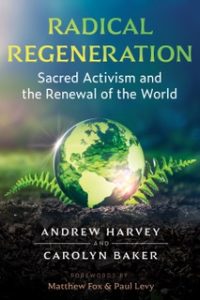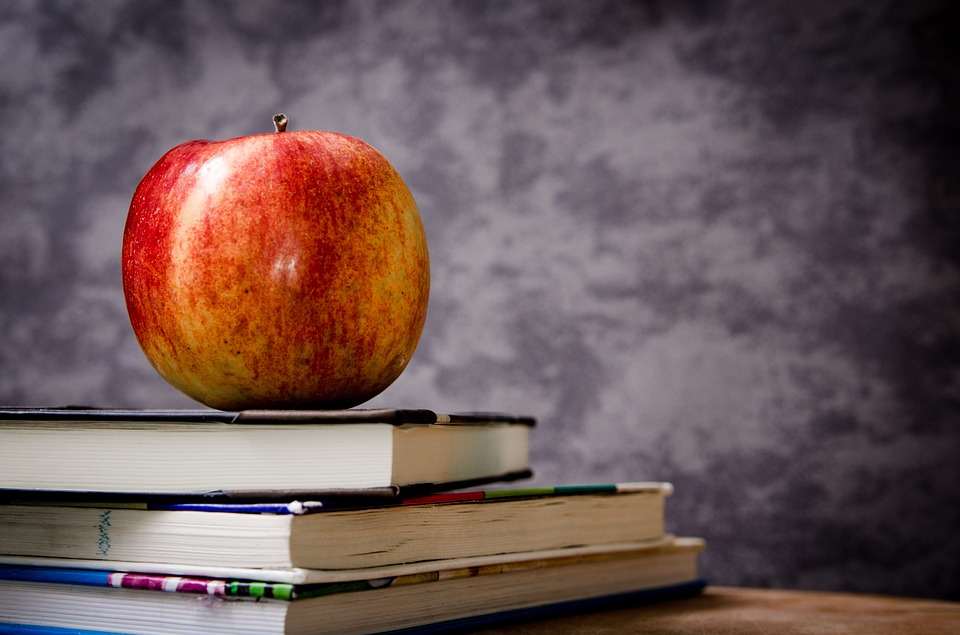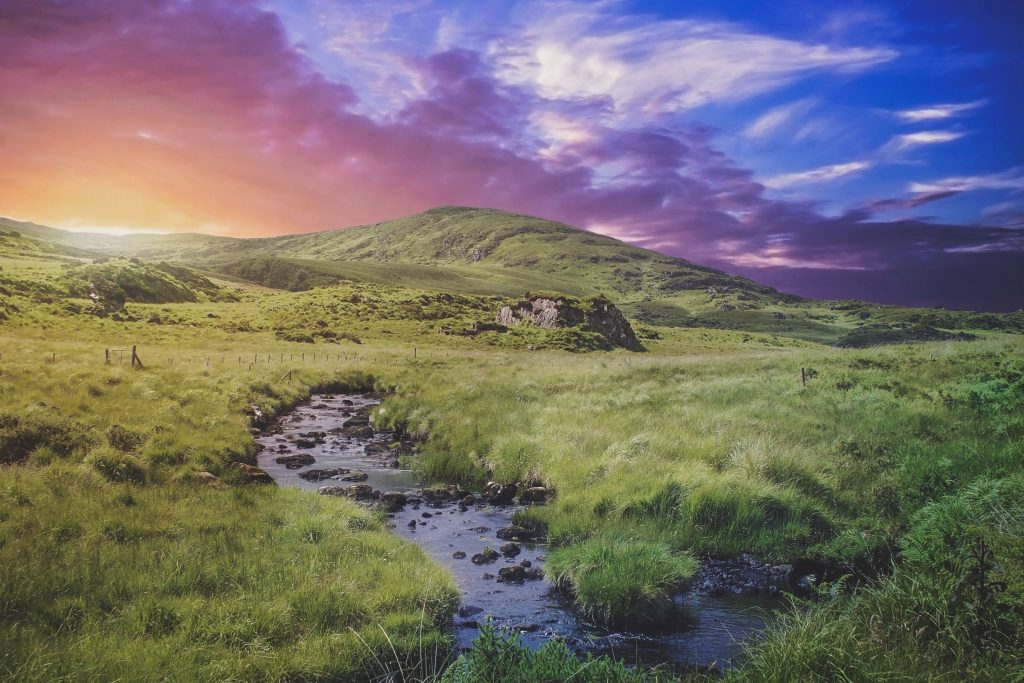The Sanctity of Food
Few people on Earth understand the dire state of humanity’s current food supply and what are likely to be severe and ultimately fatal disruptions in our food supply in the coming years due to climate chaos and industrial farming. One person who understands our food predicament more clearly than anyone we know is Michael Brownlee of Boulder, Colorado, author of The Local Food Revolution: How Humanity Will Feed Itself in Uncertain Times. In this book, Brownlee is inciting a local food revolution, and this revolution is far more expansive, far more radical, and far more life-altering than creating a few farmers markets and promoting one’s local economy. According to Brownlee, our industrial food system “has itself become the greatest threat to humanity’s being able to feed itself.” However, this revolution is not merely an uprising against the global industrial food system but also a “coming together to build something new in the face of nearly impossible odds.” In fact, it is a spiritual, as well as social and political, event because it will require us to learn how to feed ourselves. What is more, it is a “center of aliveness in the midst of a dying civilization” which “provides more than hope; it is a revolution of the deeper meaning and purpose and presence that lie ahead, emerging mysteriously out of a convergence of seed, soil, soul, and stars.” The Unholy Alliance—Big Food, Big Agriculture, and Big Pharma, empowered by Big Banking and Big Government—has deprived us of the autonomy of learning how to feed ourselves and has also convinced farmers, entrepreneurs, and investors that solutions for feeding the world are technological only.10
In other words, in the local food revolution that must happen, “we are not attempting to change or fix the global industrial food system. We’re simply putting all our efforts into building our own food system, our own regional foodsheds.” According to Brownlee, we must “resign as consumers” and opt out of the global food system which is what the Unholy Alliance fears most: losing control of our food supply, but more fundamentally, losing control of us.11
For Brownlee, the realization that we are now facing impending catastrophic climate change has been life-changing in the way that near-death experiences often are. He notes that abrupt climate change is giving humanity a near-death experience that may provide, as such experiences often do, an entirely new outlook on life. Part of this new outlook for the author has been his countless epiphanies with regard to food and the possibility of an emerging food revolution. Such a revolution could not have occurred in the context of business as usual but rather, as Brownlee states, “the food revolution manifesting around local food can occur only at the moment of the death of a civilization . . . in the same way that the supernova process is possible only with the death of a star.”12
Thus, urgent, radical involvement in our local food system, as well as how we prepare, cook, preserve, and conserve our food, is a pivotal aspect of regeneration. Our practices for growing and distributing food in the face of catastrophic climate change and toxic industrial food policies must be solidly in place, otherwise regeneration will not be possible, because those remaining on the planet will perish.
The earliest humans were hunter-gatherers who never knew exactly where their next meal might be coming from. In fact, their “meals” were probably eaten on the run as they stalked enough prey to constitute an actual meal, but it is unlikely that their meals were regular or even eaten daily. Given the conditions under which they secured food, it was impossible for them to take any of it for granted. Every morsel was hard-won and therefore, exceedingly precious.
When humans became sedentary, they transitioned from hunting and gathering to growing their own food and, while this made eating more predictable as a result of a more stable lifestyle, few ate mindlessly. Whether living in a small agricultural village along the Nile River in ancient times or growing food in one’s backyard garden in the twenty-first century, small-scale agriculture is labor-intensive, and appreciation for food is greatly enhanced by the energy expended in growing it.
Sedentary societies were dependent on the kindness of nature to provide the rain and sunshine necessary for growing food. Thus, many Earth-based forms of spirituality evolved in which humans experienced a direct connection between the agricultural harvest and a particular deity such as Osiris in Egypt and Ceres in Rome. As part of their gratitude for what they believed the deity had provided, people offered food to the gods and goddesses of nature.
Throughout human history, particularly in indigenous cultures, food has been perceived as sacred. The word sacred is not a religious term but rather one that simply means “set apart” or not of the ordinary. It is also related to “sacrifice,” which may mean that something is sacred because it derived from something sacrificed. For example, we speak of battlefields and military cemeteries as sacred. In ancient times, some temples, mountains, or forests were sacred because animals were sacrificed to a god in those places. All food is sacred in the sense that the life of a plant or animal has been sacrificed to feed another being.
Ancient, traditional societies understood that food is life force energy for which they needed to exert significant amounts of energy, whether by hunting or growing it in order to eat. Because their survival was often in jeopardy, food became sacred to these cultures.
With the mass movement of people from the land to cities, the sanctity of food was eclipsed by fascination with artificial, synthetic, and technologically produced forms of food. No longer was it necessary to hunt or grow food because now it was delivered from short or long distances to nearby markets. Thus it seems that the sacredness of food decreased in proportion to the energy required to obtain it.
At this moment we are witnessing, and many of us are participating in, an unprecedented transition from industrial agriculture to sustainable (local, organic) agriculture. While this transition has been shaped by declining resources, including fossil fuels, and while an increasing number of individuals prefer to eat foods grown closer to home that have not been contaminated with pesticides, attempting to define the transition exclusively in terms of science or sustainability discounts the role of the human soul in it. In other words, there is a spiritual component to this phenomenon.
In his article “Reclaiming the Sacred in Food and Farming,” University of Missouri Emeritus Professor of Agriculture and Economics John Ikerd writes of the spirituality of sustainable agriculture and asks, “What is this thing called spirituality?” His answer: “[S]pirituality is not religion, at least not as it is used here. Religion is simply one of many possible means of expressing one’s spirituality. William James, a religious philosopher, defined religion as ‘an attempt to be in harmony with an unseen order of things.’ Paraphrasing James, one might define spirituality as ‘a need to be in harmony with an unseen order.’ This definition embraces a wide range of cultural beliefs, philosophies, and religions.”13
Ikerd proceeds to quote statements defining spirituality from a variety of cultures, and summarizes them by saying:
A common thread of all these expressions of spirituality is the existence of an unseen order or interconnected web that defines the oneness of all things within a unified whole. We as people are a part of this whole. We may attempt to understand it and even influence it, but we did not create nor can we control it. Thus, we must seek peace through harmony within the order of things beyond our control. This harmony may be defined as “doing the right things.” And, by “doing the right things” for ourselves, for others around us, and for those of future generations, we create harmony and find inner peace.14
As students of mythology and ritual, we must also ask what the symbolism of this transition may be for our time. On some level, whether conscious or unconscious, we are all aware of the dire predicament in which we and our planet are mired at this point in human history. In fact, we believe that through a return to sustainable agriculture and in the very act of growing our own food, some aspect of the human psyche is bowing to the Earth and the sacred in gratitude for and resonance with the elements of the soil from which we have evolved. The ramifications of this in our lives and our communities have been and may well continue to be astounding—a renewed reverence for the Earth, a heightened appreciation for nutrition and the health benefits of organic food, a deepened connection with our families and communities around growing and eating food in our local place, and enmeshing local foodsheds directly with local economic development, to name only a few.
The opposite of the sacred, of course, is the profane. Something in our ancient memory understands that mindlessly manufactured and technologically tortured so-called “food” constitutes the most profane of substances, unfit to be ingested by human bodies. The more deeply immersed we are in the sanctity of food and its origins, the more we are likely to be repelled by processed, genetically modified, and chemical-laden foods that have been produced by way of massive resource and ecological destruction, and which deliver more of the same to our physiology.
The sacred within us instinctively resonates with the sanctity of food. Therefore, the growing, transporting, distribution, and consumption of food are sacred acts that deserve ritual and reverence from the moment the seed is planted in the Earth to the moment we have washed and put away the plate on which our food was served.
How then specifically do we respond when we return to the reality of food as sacred? Peter Bolland, in his article, “The Sacrament of Food,” says, “Maybe the most sacred space in your home is not the yoga room, or the altar with the candle, or the chair by the window where you meditate and pray. Maybe the most sacred room in your house is the kitchen.” But our interaction with food begins far in advance of preparing it in the kitchen. Here are some suggestions for cultivating more mindful reverence in our relationship with food:
- Know exactly where your food comes from. Read labels, ask questions, and research sources for whole, organic foods in your region.
- Consider becoming a community supported agriculture (CSA) member. This allows you to buy directly from the farmer or grower.
- Give thanks when you shop—thank the food you purchase, thank the market staff, and give thanks that you can afford to shop.
- Commit to making 10% or more of your total food purchases food which is grown locally.
- Mindfully plan your meals. Perhaps it won’t be possible for you to eat at home today or tomorrow or the next day because you are traveling or because of time constraints. Plan a strategy for eating in places where nourishing food is served or plan to bring healthy snacks with you.
- Take a moment or two to stop before eating and give thanks for your food. Remember to thank the people who grew, harvested, transported, and distributed your food. Thank plants and animals for their lives and the sacrifice they made with their lives so that you can be fed.
- Regularly enjoy food with family and friends. Cook and eat meals together. Share the sacrament of food with each other in potlucks or other gatherings.
- Occasionally share extra food or leftovers with neighbors or people who are not in your family or circle of friends. In a world of skyrocketing food prices and climate change, food “security” may become increasingly “insecure,” and sharing food with others communicates a subtle message that you are concerned about their wellbeing in hard times. Reaching out in this way encourages reciprocity around food so that when someone has little or no food, others are more motivated to share.15
While eating is a political and an economic act, it is also a sacrament. How we eat matters not only to ourselves but to everyone else, or, in the words of Peter Bolland, “The way we eat is the way we live. How we eat is who we are. Let us affirm that which is best in us and in each other through the sacrament of food.”
Reprinted by Permission of the publishers Inner Traditions Bear and Company 2023.
 Offering a deep discussion of our global dark night in terms of the Kali Yuga, the authors examine the dangers of a growing constellation of intractable crises—authoritarianism both in America and abroad, climate change, economic inequality, social upheaval, and spiritual malaise. They explore the antidotes to these crises: Sacred Activism—specifically, creative, wise, sacredly inspired action—and a profound understanding of our evolutionary ordeal and its potentialities. Examining the power of joy to help enact personal and planetary transformation, they explain how joy, or ananda, is a force all mystical traditions recognize as the essence of the divine. They reveal how to uncover and sustain joy in ourselves and how to use joy as fuel for continuing Sacred Activism in dangerous times.
Offering a deep discussion of our global dark night in terms of the Kali Yuga, the authors examine the dangers of a growing constellation of intractable crises—authoritarianism both in America and abroad, climate change, economic inequality, social upheaval, and spiritual malaise. They explore the antidotes to these crises: Sacred Activism—specifically, creative, wise, sacredly inspired action—and a profound understanding of our evolutionary ordeal and its potentialities. Examining the power of joy to help enact personal and planetary transformation, they explain how joy, or ananda, is a force all mystical traditions recognize as the essence of the divine. They reveal how to uncover and sustain joy in ourselves and how to use joy as fuel for continuing Sacred Activism in dangerous times.
ISBN: 97816441156
References
[10] [11] [12] Brownlee, Michael. The Local Food Revolution: How Humanity Will Feed Itself in Uncertain Times. North Atlantic Books, 2016.
[13][14] Ikerd, John E. Crisis and Opportunity: Sustainability in American Agriculture. University of Nebraska Press, 2008.
[15] http://peterbolland.blogspot.com/2012/12/the-sacrament-of-food.html







